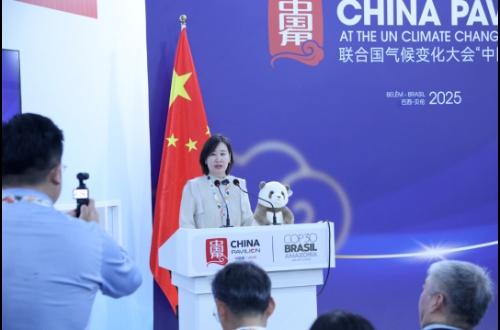Newest
-

Bell Rings, Drums Roll - 2026 Beijing New Year Countdown Event to Welcome the New Year Across the City
-

Wuliangye's Influencer Dining in Singapore: A Symphony of Nanyang Charm and Rich National Fragrance
-

Nurturing New Quality Productive Forces: How China's A-Share Market is Shaping the Future of the Nation's Economic
-

White Panda Appears at COP30, Tongyi Petrochemical Calls for Attention to Climate Mutation
Crypto lending is booming as investors hunt for yield. It turned this company from niche startup to $1 billion unicorn i
 2021-07-22
2021-07-22

The recent plunge in cryptocurrencies has sent investors searching elsewhere in the digital universe for sky-high returns.
Many of them are getting into the fast-growing sector of crypto lending, which can net investors returns far above the measly 0.05% or so that banks offer on deposits.
Retail investors can get crypto "savings" accounts that typically offer annualized returns of between 5% and 12%. Braver braver souls can lend to decentralized finance projects in the wilder corners of the market and earn several thousand percent.
One beneficiary of the crypto lending boom has been Amber Group, a Hong Kong-based startup that has become worth $1 billion after a June fundraising round – and after just four years in existence.
Amber offers high-frequency and algorithmic trading, derivatives and various other fancy products. But, like many crypto lenders, its core business model is simple. It takes crypto from "savers" who want to lend, and lends crypto to institutions or people that want to borrow it, for example hedge funds shorting bitcoin.
Its products offer returns ranging from 3% and 40% or above. Focused on Asia, it mainly serves institutions, but is expanding its offering to retail customers.
"What we are doing essentially is similar to a bank," Amber's chief executive officer Michal Wu told Insider this week. "Of course, we do take a bit of interest margin on that ourselves."
That interest margin accounts for 70% to 80% of Amber's revenues, which could be around $500 million in 2021. The business, which has about $1.5 billion under management, has attracted investment from the likes of crypto exchange Coinbase and hedge fund Tiger Global Management.
Coinbase is itself getting in on the lending game. The biggest US crypto exchange announced at the end of June that it's launching a crypto savings account that offers 4% annualized interest. Gemini, Bitfinex and BlockFi are among the numerous other companies offering similar products.
So what's the catch? Well, if a return is much higher than on a standard savings account, it must be a much riskier investment.
The chief danger for retail investors is that these savings products have no federal deposit insurance. Investors are handing over control of their crypto to relatively new companies, who could run off with it or go bust.
David Grider of research house Fundstrat said in a recent note: "If the lender's assets become impaired somehow during a sell-off, where liquidated collateral doesn't cover loans issued, or during a hack lose funds... or due to improper management of the business – users can lose a substantial portion of their funds."
Coinbase has sought to calm investors' nerves by assuring them that it doesn't lend to unauthorized third parties. And Wu says Amber Group only lends to institutions on an over-collateralized basis, meaning borrowers have to stump up more of one asset than they're borrowing of another.
Wu says crypto finance's promise of steady returns is drawing in large numbers of new investors, including retail traders and the uber-wealthy – and even traditionally conservative family investment offices.
Like many more financially minded crypto advocates, Wu says he welcomes tougher regulation. "There are a lot of bad actors in this industry, let's be honest," he says. "It's actually better for the regulators to be more involved early on… the [companies] that can both innovate and also be compliant and really deal with global regulation will prevail."
